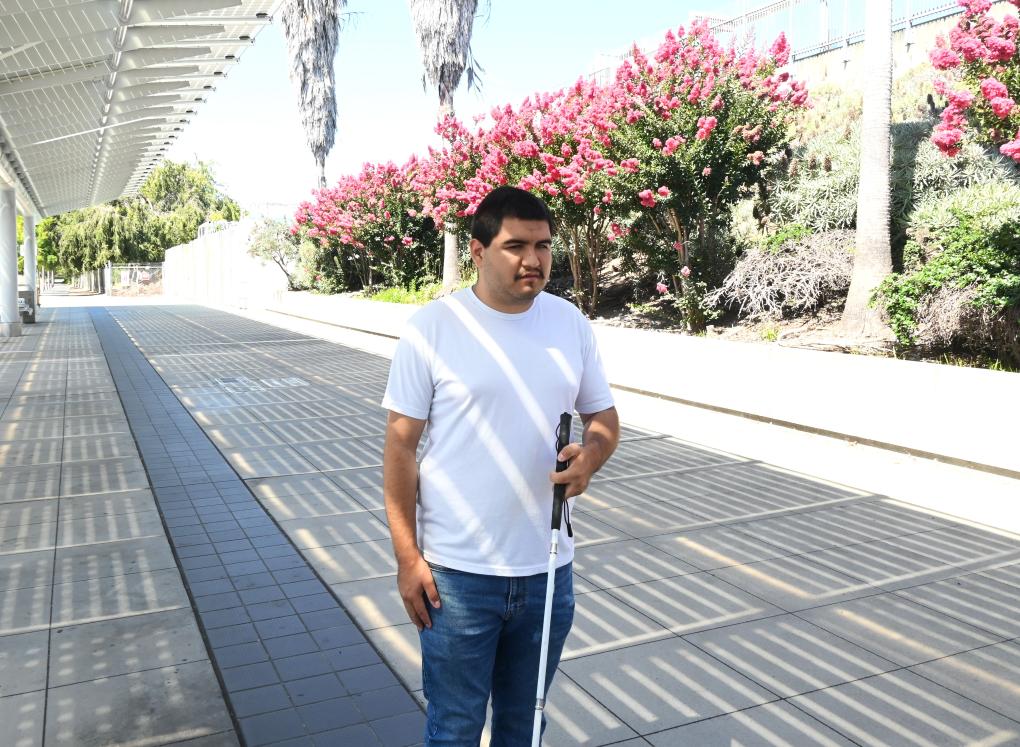Note: GJEL Accident Attorneys regularly sponsors coverage on Streetsblog San Francisco and Streetsblog California. Unless noted in the story, GJEL Accident Attorneys is not consulted for the content or editorial direction of the sponsored content.
Wayfinding on public transit can be challenging enough for people with 20/20 vision. For the blind and visually impaired, tactile and audible cues are essential. That's why BART employs tactile guideways to help people navigate. And they've hired Erik Huizar, a college student with low vision, to evaluate BART's guideways.
From a BART blog post:
Erik Huizar has a large task ahead of him. Over the coming months, the 19-year-old college student is visiting – well, not just visiting, but walking, memorizing, sensing, pondering – twenty stations around the BART system to build descriptive reports of their tactile guideways. Some of these reports have been uploaded to the BART Low Vision or Blind Accessible Services webpage and more will be uploaded in the coming months.
For example, Huizar’s Milpitas Station report says:
All the paths are made of yellow six-inch-wide plastic tiles. When there is an intersection or direction change in the path, there is a block of truncated domes to indicate this. In multiple places, there are spurs, which split from a path, this indicates a direction change, or the end of a section of path.
BART will be working with other transit agencies to improve access for people with no or low vision. Presently, Bob Franklin, BART’s Director of Customer Access and Accessibility, noted that in a national accessibility working group, the forty-plus public transit agencies involved “all do something different for their pathways.”
Consistency in design is a standing principle for streets and transit. Streetsblog hopes BART and other transit agencies continue to rationalize their wayfinding for visually impaired people (and fully sighted people). That's also going to take money for better (not to mention working) elevators and other features to make transit more accessible generally--something transit advocates are working on.
For more on Huizar's work, check out the full post on BART's blog.





